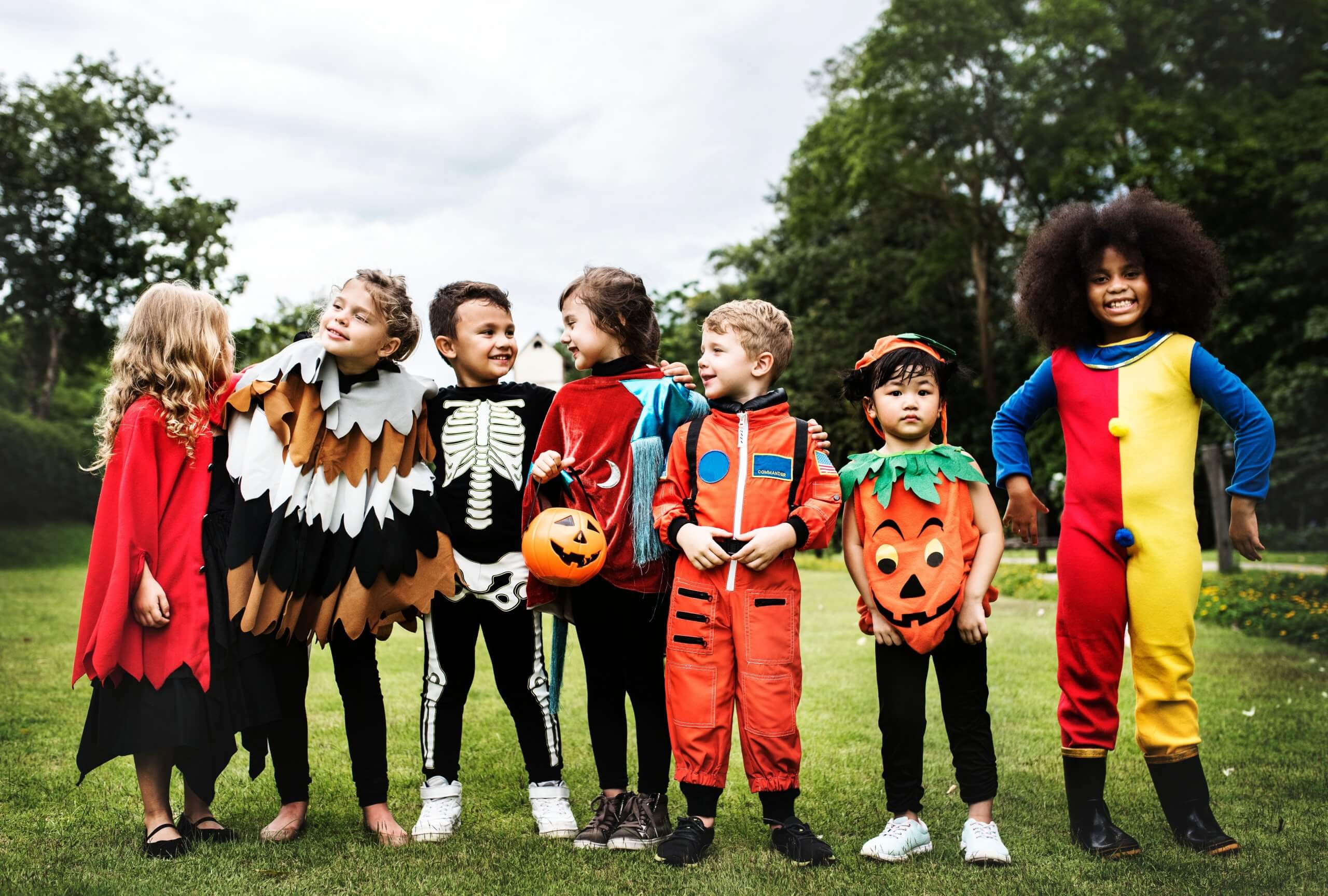November 25, 2025
How to Make Halloween a Treat for Kids with Autism Spectrum Disorder (ASD)
FEATURED POSTS
September 25, 2025
There’s a lot about Halloween that can be tricky for kids on the autism spectrum.
The holiday is full of everything out of the ordinary: costumes, candy, and a certain amount of chaos. Routines get replaced with class parties, strange sights and sounds, and droves of costumed-kids roaming around trick-or-treating after dark.
The University of Alabama at Birmingham School of Medicine says recent studies indicate that five percent of children are affected by a sensory processing disorder. For kids with autism, as many as 80 to 100 percent experience sensory processing challenges, according to an article from JAMA Pediatrics. Challenges include being over-responsive or under-responsive to sensory input like bright lights, loud noises, or tight clothing. With the many opportunities for sensory overload that come with Halloween, the holiday can present a particular challenge for kids on the autism spectrum.
Experts say their biggest tip for making Halloween a success for kids with ASD is to prepare with some planning so your child is not caught off-guard. Here, we share six steps to help you plan.
Prepare Your Child with Autism for Halloween by Talking About It
In the days or weeks leading up to Halloween, give your child some time to adapt to the concept. Read books and show pictures, movies, or cartoons that give them visual cues of what to expect. Start talking about people dressing up, decorations you see in your neighborhood, and what happens when kids go trick-or-treating.
Talking about these traditions can take some of the “scary” out of Halloween. It can be confusing when you’re suddenly hearing creepy music and allowing your child to take candy from strangers. A little prep can go a long way in easing their fears.
Ensure Your Child’s Halloween Costume Works for Them
If your child is going to wear a costume, have them try it on well in advance to get used to the feel of it. Let them play in it for short intervals, and avoid costumes that are uncomfortable or get in the way of their mobility, breathing, or vision.
If clothing texture is an issue, consider something simple like a decorated hoodie, character pajamas, or an accessory they could wear over regular clothes, like a cape. Also do some sleuthing online by searching for “Halloween costumes for kids with autism” or “sensory friendly Halloween costume ideas.”
Help Prepare Your Child for Trick-or-Treating Through Role Play
Role play what it would be like to go trick-or-treating. You can even see if neighbors will let you ring their doorbell to practice the “trick-or-treat” skill a few days before Halloween. Talk about safety rules for crossing the street, and set boundaries on taking only one treat and not more than what’s offered. Bring a flashlight, and consider taking noise-cancelling headphones, in case your child needs them.
A trial run might also give you a sense of whether your child is comfortable dressing up and trick-or-treating. If they’re not up for it, consider whether an activity, such as decorating pumpkins or cookies at home, would be less overwhelming. After all, trick-or-treating is only one part of Halloween. Don’t feel the least bit guilty about opting out.
If you do opt to stay home, consider letting your child practice handing out candy at your own front door. Practice with a real piece of candy or healthy snack, and consider offering your child a piece as a treat.
Respect Your Child’s Limits for an Enjoyable Halloween Experience
You don’t have to walk the whole neighborhood to enjoy a Halloween outing. Try starting early, before it gets dark, and skipping houses with a lot of noise, crowds, or scary decorations.
Know your child’s limits—and your own limits. Maybe you need to go to just a few houses before you head home. Keeping your outing short may help your child avoid a meltdown—and may help you feel less stressed and overwhelmed.
Halloween Candy Limits and Creative Alternatives
Once you get home, turn off your porch light to signal Halloween trick-or-treating is over at your house.
Have a plan for your child’s candy stash and how much they’ll be allowed to eat. If sugar before bedtime is off-limits in your house, consider letting your child trade in the candy for a toy or coins for their piggy bank, or a chance to do something else enticing like playing a game, listening to a song, or watching a show.
Tailor Halloween Traditions to Fit Your Family’s Needs
The most important thing is to create a plan and a Halloween environment that fits your child’s comfort level, in addition to your own comfort level. Remember: your holiday traditions can be unique to your family.
There’s no holiday better than Halloween to show that special days come dressed in different ways, and everyone has a place. If you play to your child’s strengths and know your family’s limits, you can set yourself up for a successful day that really is a treat.
Learn more on our blog about routine changes and avoiding meltdowns.







